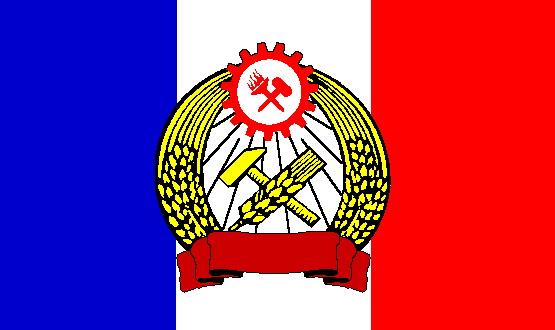T-hiddemen said:I use Paint Shop Pro 9 . . .
even hiddeman is using paint - oh dear
hope you know i am kidding ^^
T-hiddemen said:I use Paint Shop Pro 9 . . .
Ayeshteni said:I was going to use the flag you just done for Canada (it fits), though I would need a different counter (and a skin of course).
I am currently using one of your GB skins as monarchist india, but I would love a India/Empire skin and flag set (I just dont know what that flag set could be though).
I know you are busy, so no rush, I understand.
Ayeshteni

Gen.Schuermann said:even hiddeman is using paint - oh dear

hope you know i am kidding ^^

T-hiddemen said:Well, Monarchist India sparked the muse . . .
here is a teaser . . .

CCurio said:Here is early suggestion for Commune of France flag.
[image]
Yes yes, it looks quite sovietish. And I need some catchphrase for the red banner at the root of the emblem and the cogwheel symbol could use some work. Also, there's your wheat, Sarmatia. Yum yum.
Ayeshteni said:Thanking you most kindly sir.
Tis marvelous.
EDIT: @T-Hiddemen, there seems to be something wrong with the sidebar (I dont think the dimensions are correct)
Ayeshteni
Ayeshteni said:Thanking you most kindly sir.
Tis marvelous.
EDIT: @T-Hiddemen, there seems to be something wrong with the sidebar (I dont think the dimensions are correct)
Ayeshteni
T-hiddemen said:Try it now, you will probably have to hit refresh in your browser . . . I still have no idea what what wrong, it was off 2 pixels in the horizontal and one in the vertical. I used the same template as always
Well its fixed now, glad you liked it!
Ayeshteni said:Thanking you most kindly sir.
Tis marvelous.
EDIT: @T-Hiddemen, there seems to be something wrong with the sidebar (I dont think the dimensions are correct)
Ayeshteni



